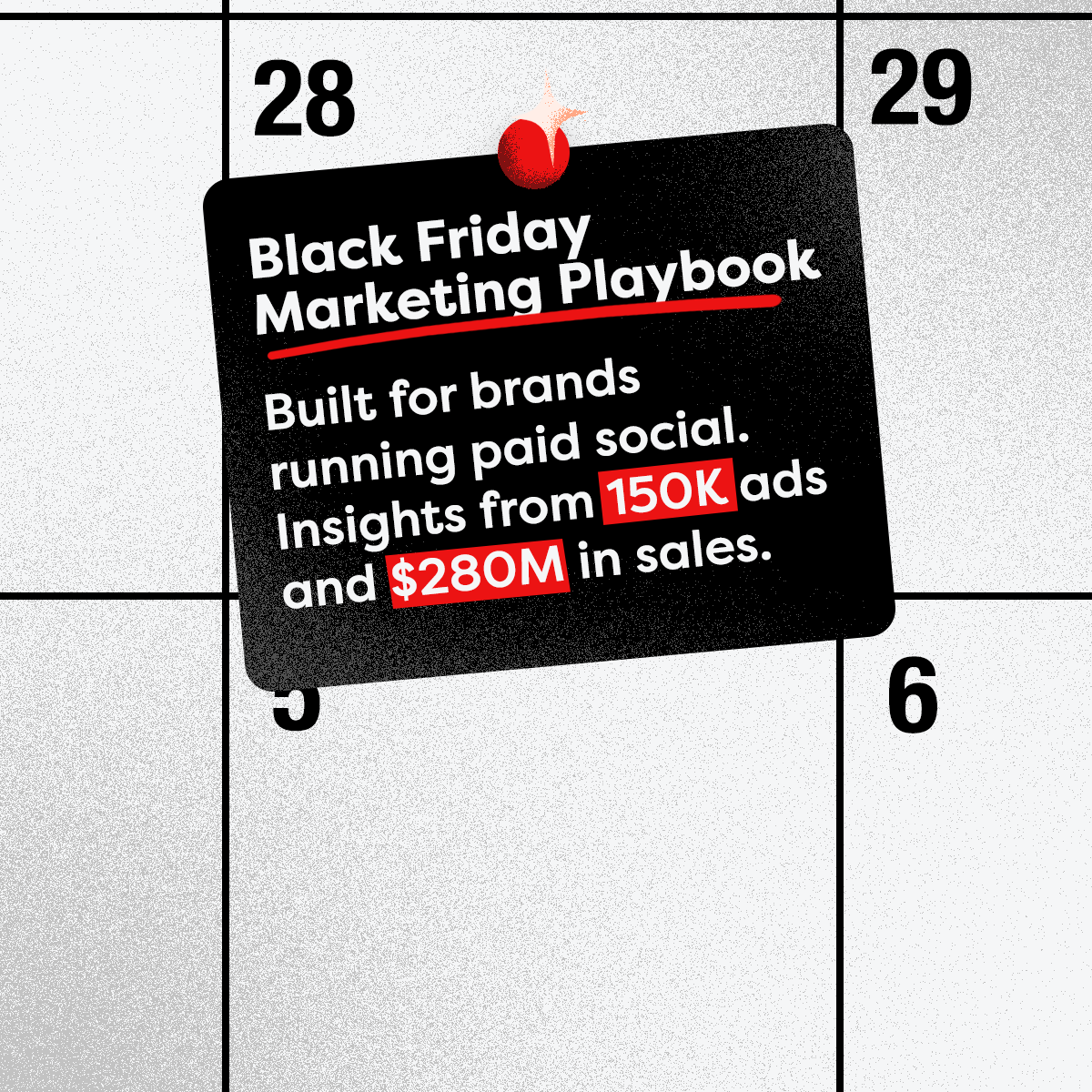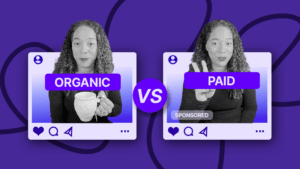Organic UGC: How to Turn Native Creator Posts into Scalable Performance
Passionate content and search marketer aiming to bring great products front and center. When not hunched over my keyboard, you will find me in a city running a race, cycling or simply enjoying my life with a book in hand.

Short-form feeds spotlight content that feels natural, not like ads. That’s why organic UGC from real creators is so powerful – it sparks genuine engagement that platforms reward.
Meta’s AI favors posts people interact with, and TikTok’s Spark Ads let brands boost creator posts while keeping all engagement consolidated. Meaning the smart move is to test hooks organically, then scale the winners through creator-handle ads.
Let’s explore how to put organic UGC at the center of your creative strategy to combine authenticity with performance and turn creator content into lasting growth assets.
TL;DR
- Native creator posts earn algorithmic reach and real social proof.
- Test with organic UGC, then scale via Spark Ads or Partnership Ads.
- Consolidating engagement improves trust and performance over time.
- Prioritize creator signals that ranking systems reward.
What Organic UGC Really Means for Brands
For brands, organic UGC goes beyond traditional influencer marketing. It’s about tapping into authentic posts that creators already share with their audiences and giving them a bigger stage. Because these posts blend naturally into feeds, they earn more trust and attention than polished brand ads. Platforms reward this native feel by pushing it further in recommendations.
The real power of organic UGC is in the signals it generates. Comments, shares, and saves show algorithms that people care, which makes the content more visible.
For brands, this turns creator posts into a low-risk testing ground. You can validate hooks and messages with organic reach before putting ad spend behind them. Once the winners are clear, scaling them becomes far more efficient – rooted in real audience behavior rather than guesswork.

Prepare For Black Friday With Ease
How Organic UGC Differs from Traditional Influencer Marketing
Traditional influencer marketing and organic UGC may look similar on the surface, but they work very differently in practice:
- Content style: Influencer campaigns sometimes produce polished, highly edited posts. Organic UGC feels raw, real, and created for everyday sharing, not staged as an ad.
- Timing: Influencer content is usually tied to short campaign windows. Organic UGC is ongoing and continues to drive engagement as long as it stays relevant in feeds.
- Scalability: Influencer posts tend to peak quickly and fade. With Spark Ads or Partnership Ads, brands can take high-performing organic UGC and amplify it. Consolidating likes, comments, and shares into one place for stronger long-term proof.
In short, influencer campaigns can be powerful for bursts of awareness, while organic UGC creates a foundation for continuous engagement and scalable performance.

Testing with Organic UGC, Scaling with Paid
Organic UGC offers a low-risk way to experiment with messaging, hooks, and creative angles.
Since these posts already fit naturally into feeds, they provide a realistic view of how audiences respond without heavy media spend. Strong engagement signals highlight which ideas resonate most.
Brands can then take the top-performing organic posts and scale them through paid formats like Spark Ads or Instagram Partnership Ads. This ensures that budget is directed toward content with proven appeal, turning organic validation into measurable performance gains.
The advantage lies in consolidating engagement. Instead of splitting likes, comments, and shares between organic and paid UGC, all interactions gather on the creator’s post. This builds stronger social proof, which not only improves ad performance but also boosts credibility with audiences over time.
Best Practices for Maximizing Organic UGC
To fully unlock the potential of organic UGC, brands should focus on five key areas:
- Collaborate with creators early: Involve creators in the ideation stage so content feels both authentic and aligned with brand messaging. Early collaboration helps ensure the creator’s natural style shines through, which boosts credibility and trust.
- Prioritize native hooks: The first 3-5 seconds of short-form content are critical. Use bold visuals, direct questions, or quick product demos to capture attention before users scroll. Platforms like TikTok emphasize the importance of strong hooks for keeping viewers engaged.
- Track engagement signals: Saves, shares, and comments indicate content is resonating beyond surface-level likes. Meta notes that its ranking systems prioritize posts people interact with deeply. Monitoring these signals helps identify which pieces are worth scaling.
- Consolidate interactions: Instead of reposting content and splitting engagement, use Spark Ads on TikTok or Partnership Ads on Instagram to amplify the creator’s original post. This approach builds concentrated social proof, making ads appear more trustworthy and effective.
- Iterate quickly: Test multiple variations of creative and double down on what works. Because organic UGC is lightweight and authentic, it allows faster cycles of experimentation compared to polished brand-led ads.
Following these practices allows brands to balance authenticity with performance, ensuring UGC campaigns resonate while also delivering measurable results.
Try out Billo AI Mashups to quickly turn your existing creatives into new ads.

Conclusion
Organic UGC bridges authenticity and performance by letting brands harness real creator content in ways that scale. It’s not just a trend, it’s a proven model for testing, validating, and amplifying creative that feels native to short-form platforms.
By consolidating engagement and prioritizing authentic creator voices, brands can build trust while driving measurable growth.
Now is the time to put organic UGC at the center of your creative strategy – test with authenticity, scale with precision, and turn creators’ content into lasting performance assets. Explore Billo for authentic creators and data-backed performance tracking.
FAQs
What’s the difference between organic UGC and influencer ads?
Organic UGC starts natively on a creator’s profile; influencer ads are paid placements. You can later boost the organic post as an ad.
Can organic UGC replace traditional brand ads?
Not always; use organic UGC to find winners and scale via Spark/Partnership ads alongside brand assets.
How do I measure lift vs brand-handle ads?
Run controlled flights: creator-handle ads vs brand-handle ads using the same offer; compare CTR, CPC, ad recall, and holdout conversions.
SEO Lead
Passionate content and search marketer aiming to bring great products front and center. When not hunched over my keyboard, you will find me in a city running a race, cycling or simply enjoying my life with a book in hand.

Authentic creator videos, powered by real performance data
22,000+ brands use Billo to turn UGC into high-ROAS video ads.
Common UGC Brief Mistakes Brands Still Make in...
A vague or overpacked brief derails campaigns before they start, [...]...
Read full articleOrganic UGC vs Paid UGC: How Top Brands Drive Gr...
More brands are turning to user-generated content (UGC) to fuel [...]...
Read full articleUGC Rates in 2025: What Brands Actually Pay (and...
Sticker shock around UGC rates usually comes from treating creator work like [...]...
Read full article



